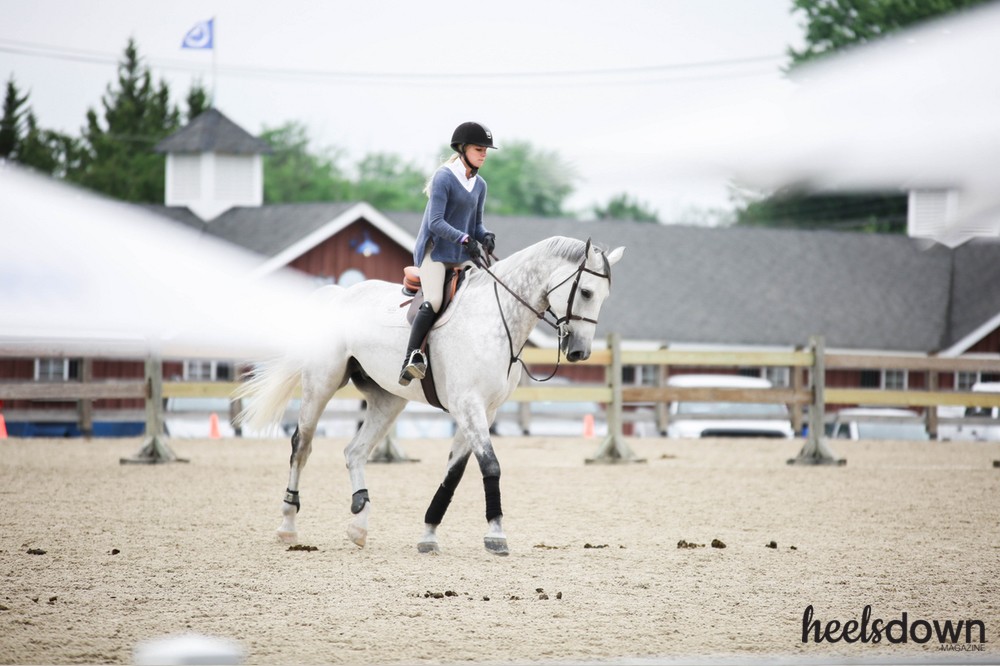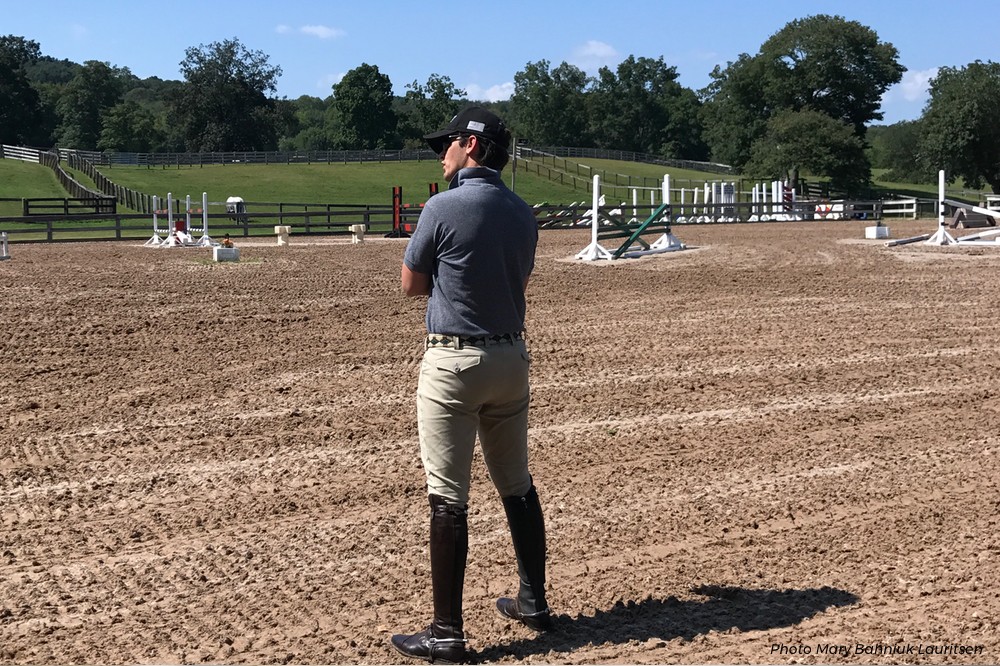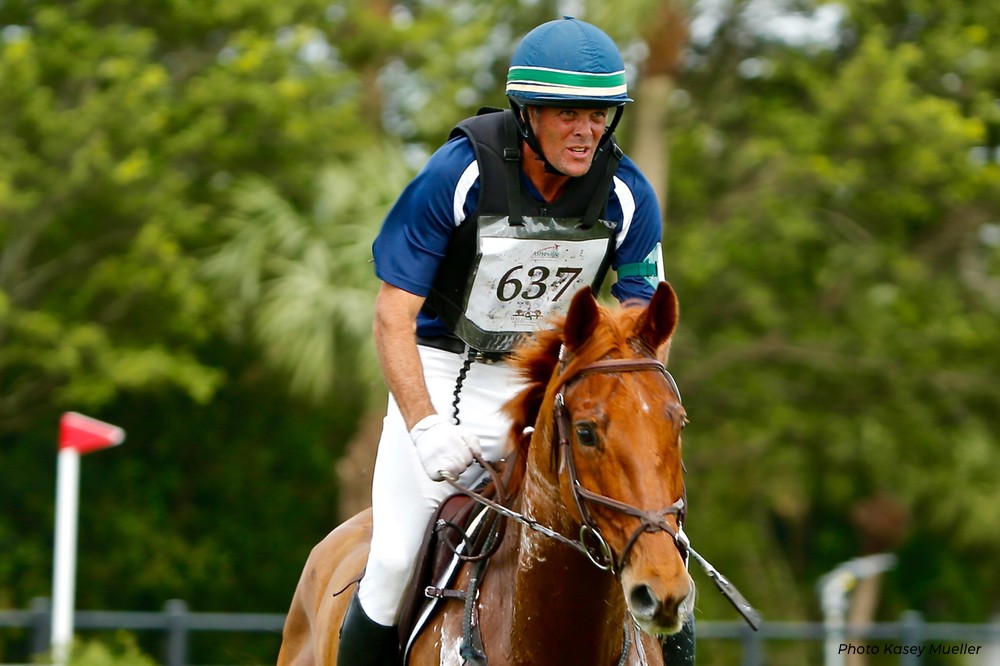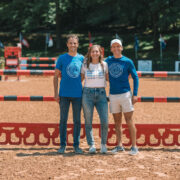Should My Trainer Ride My Horse During a Lesson?

We’ve all been there before: You’re having an issue during your lesson, or your horse isn’t quite grasping the task at hand, so your trainer throws a leg over and demonstrates. When you get back on, it’s as if you’re riding a completely different, well-schooled horse. In that short amount of time, your horse seems to have learned the correct way of going, and you’re left scratching your head as to how this happened so quickly.
There are varying schools of thought on the idea of a trainer getting on to “fix” or address an issue. Of course, we employ trainers to help us because they are more experienced in the saddle than we are. Their experience lends itself to helping with problems or miscommunications that students may stumble upon. Not every trainer subscribes to this theory, however. The ones who do are firmly in the camp of wanting to help through demonstration versus teaching from the ground.
Exhibit A: James Fairclough
James Fairclough is a professional rider who concentrates on hunters, jumpers and equitation in Bedford, N.Y. He says he is the type of trainer who will quickly hop on during a lesson if a client is experiencing difficulty. James believes demonstration can help address the issue before it escalates.
“If we ask for a movement and after a couple of tries we aren’t productive, I will try to judge what the horse is saying from the ground,” James said. “I try to prevent the customer from getting into a ‘quicksand’ situation.”
Most of his clients are amateurs, which he says he takes into account with every lesson or specific issue. To that end, he wants to prevent communication errors from becoming large problems down the road, so James gauges the horse’s body language from the ground to determine whether or not a different method is applicable.
“Sometimes no matter how hard the client works or how deep they dig, it more often than not seems to go backwards,” James explained. “I try to diffuse the situation by changing the exercise and coming back to it later, but I always let the horse tell me when it has hit its limit.”
James says he likes to compare this concept to a math tutor who presents a student with a problem. “Rather than simply saying ‘figure it out,’ when the student has trouble, the tutor will break down the problem step-by-step so that it is easier to understand. That is what I try to accomplish through demonstration,” he said.
Getting on the horse has its purpose, James explained. He finds that showing a rider what he is asking for can be understood more quickly than simply explaining the concept from the ground.
James also wants the horse and rider to feel more confident at the end of the lesson. By getting on and schooling the horse on the movement, James is able to provide the correct aid to the horse, virtually installing the correct buttons needed for an amateur rider to then get back on and try again. On the flip side, James says he does not want to be schooling the horse in every lesson. At some point, the rider does need to learn to apply the aids correctly, or the horse simply becomes unschooled and more difficult.
“I am always trying to read the client. I don’t want to demoralize them or destroy their confidence by getting on, rather I want it to be a positive experience for everyone,” he said.
Exhibit B: Kyle Carter
On the opposite side of the spectrum is Kyle Carter, an eventing coach based in Ocala, Fla. Kyle says his philosophy is to instill the proper skills into his riders so that they are able to work through any difficulties on their own that arise throughout their training.
“I didn’t have the money to buy an upper level horse when I was growing up, so I learned to ride and produce horses from the ground up early on,” Kyle said. “Even if you purchase a three-star horse and are competing at the one-star level, you still have to have the skills to ride the dressage test and those are hard to learn. However, the method of producing a horse is something that is often missing in a rider’s training.”
Kyle recalled a time when Canadian coach Jodi Sloper reminded him to “stop teaching like a rider and start teaching like a coach.”
“What are you going to do when you can’t get on and fix it?” Jodi asked Kyle. He took this to heart and formulated his coaching style around this notion.
Now, Kyle says he will only get on a horse as a last resort. He encourages his riders to develop a feel for the horse underneath them, to learn to produce rather than push buttons.
“We should be creating riders who can produce [horses],” Kyle explained. “That is how we are going to be competitive on the world stage. All of these kids in my program have to do it themselves, and you have to treat them as such. I am very protective and careful as to what horses I put underneath my kids, but they also need to have the skill set to work through difficulty.”
Different Methods, Same Goal
The common denominator is the importance of giving riders the best tools to work through a problem. Whether those tools are given through demonstration or instruction — or a combination of both — the end goal remains the same.
Coaches are here for the expansion of the clients’ education as a rider, and varying teaching styles will work for certain riders better than others. It is also the responsibility of the rider to select a coach that will help them achieve their goals in a manner that they can understand and execute.
At the end of the day, students rely on coaches as a source of knowledge, whether that comes from the ground or on top of a horse.




